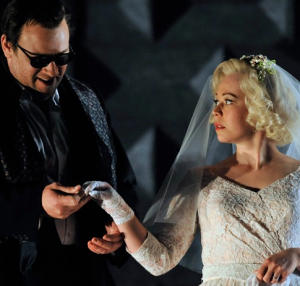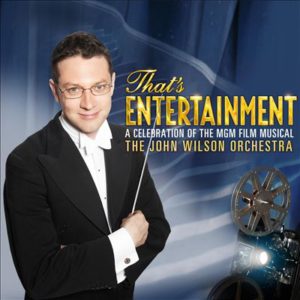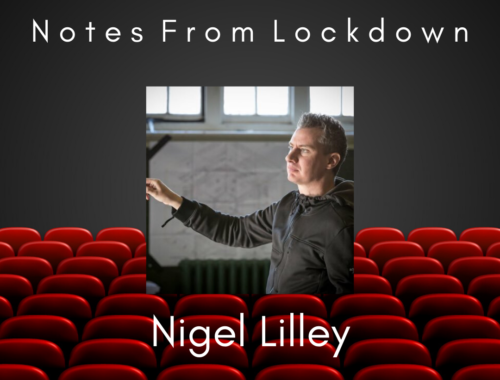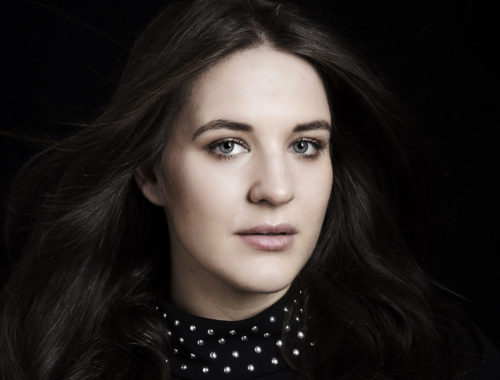Don Giovanni, Glyndebourne
 The darkness descends with the shocking first chord of the Overture brutally shutting out a beautiful day at Glyndebourne. Such comedy as there is in this show (and that aspect of the piece is kept well in check) will be black, for sure. Director Jonathan Kent and his designer Paul Brown – and revival director Lloyd Wood – keep things in furtive shadow, Brown’s metamorphosising cube of a set twisting, turning, and revealing like a psychological Rubik puzzle. Seductive Renaissance paintings and carved stone walls open to roomy interiors – the sense of things happening behind locked doors, of the private suddenly made public is dramatically conveyed.
The darkness descends with the shocking first chord of the Overture brutally shutting out a beautiful day at Glyndebourne. Such comedy as there is in this show (and that aspect of the piece is kept well in check) will be black, for sure. Director Jonathan Kent and his designer Paul Brown – and revival director Lloyd Wood – keep things in furtive shadow, Brown’s metamorphosising cube of a set twisting, turning, and revealing like a psychological Rubik puzzle. Seductive Renaissance paintings and carved stone walls open to roomy interiors – the sense of things happening behind locked doors, of the private suddenly made public is dramatically conveyed.
There are no great insights in this Don Giovanni but if things can be speeded up a little in act two – the perceptive, taut, and nuanced conducting of Andrés Orozco-Estrada (Principal Guest Conductor in waiting of the London Philharmonic) loses its grip a little in the latter stages of the evening – the sense of inevitability, of a reckless ride to the abyss is well conveyed. There is nothing flippant about the Zerlina episode, for instance: the seduction of this bride is very contemporary and very real. And I love the way the hellfire descends at the close of act one like a premonition, the curse of the Don’s detractors prematurely come to pass. When the Commendatore (a cavernous Taras Shtonda) does come to dinner the vertiginous dining table seems to hang quite literally over the precipice over which the Don will, metaphorically speaking, plummet.
Musically there is much to commend the evening, starting with Orozco-Estrada’s conducting which has a forthright period cut-to-the-bone feel but lots of seductive detail and big dynamic contrasts. The LPO played most persuasively for him. In the title role Elliot Madore was well-suited to the contemporary “naturalism” of Kent’s staging, strong on charm, purring enticements through the beguiling flutter in his voice though not quite the dominant and mysterious presence that this mythical character needs to be. Edwin Crossley-Mercer’s gangly Leporello conveyed well the social disparity between him and his master/employer in the way he carried himself and wore his clothes but again the conversational tone of the production may not be to everyone’s taste. There is an element of farce in this piece which doesn’t appear to have been on Kent’s radar.
The all-important women were characterful and strong: Lenka Máciková’s charmingly sung Zerlina really did convince me, a knowing victim indeed; Serena Farnocchia (Donna Elvira) had the advantage of language and used it well, particularly in “Mi tradi”, though she must be careful not to swallow, to throw away, detail some of which evaporated before reaching my seat in the circle; Layla Claire (Donna Anna) had bags of voice and temperament but needed to find more variety, not least in “Non mi dir”.
Musical highlight of the evening? Ben Johnson (Don Ottavio) negotiating the magical transition into the ornamented da capo of “Dalla sua pace”.
You May Also Like

A Conversation With JOHN WILSON
02/09/2011
NOTES FROM LOCKDOWN: Nigel Lilley in Conversation
16/06/2020